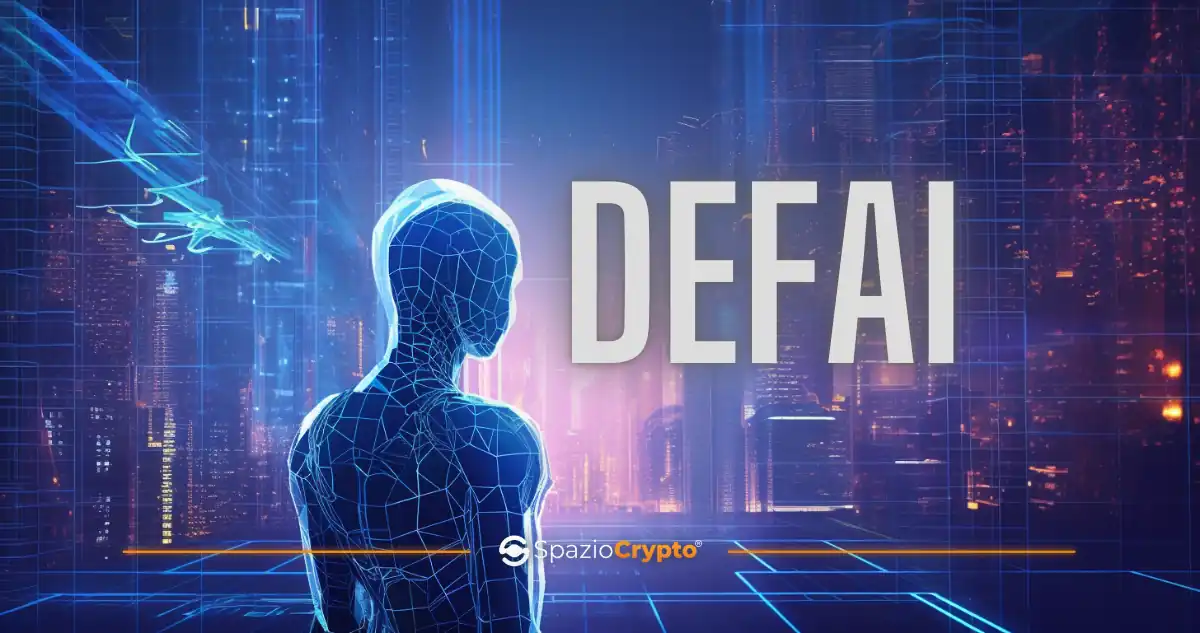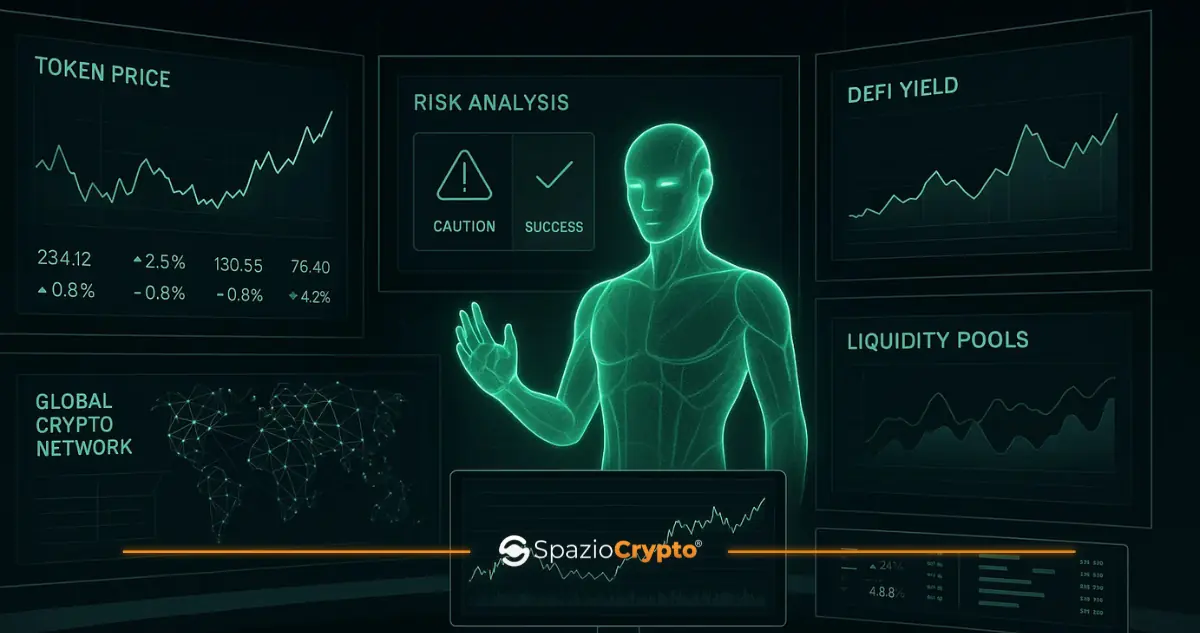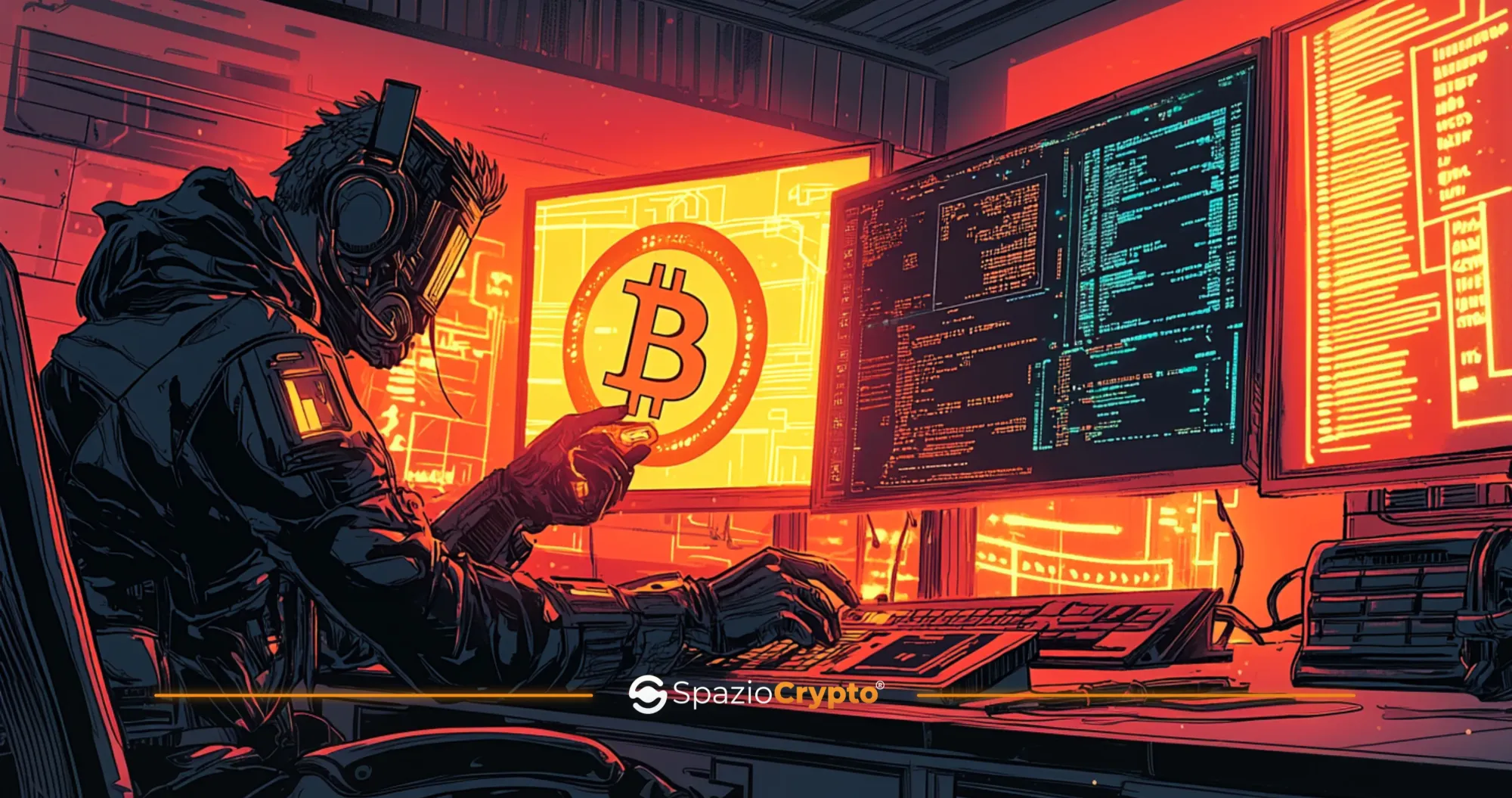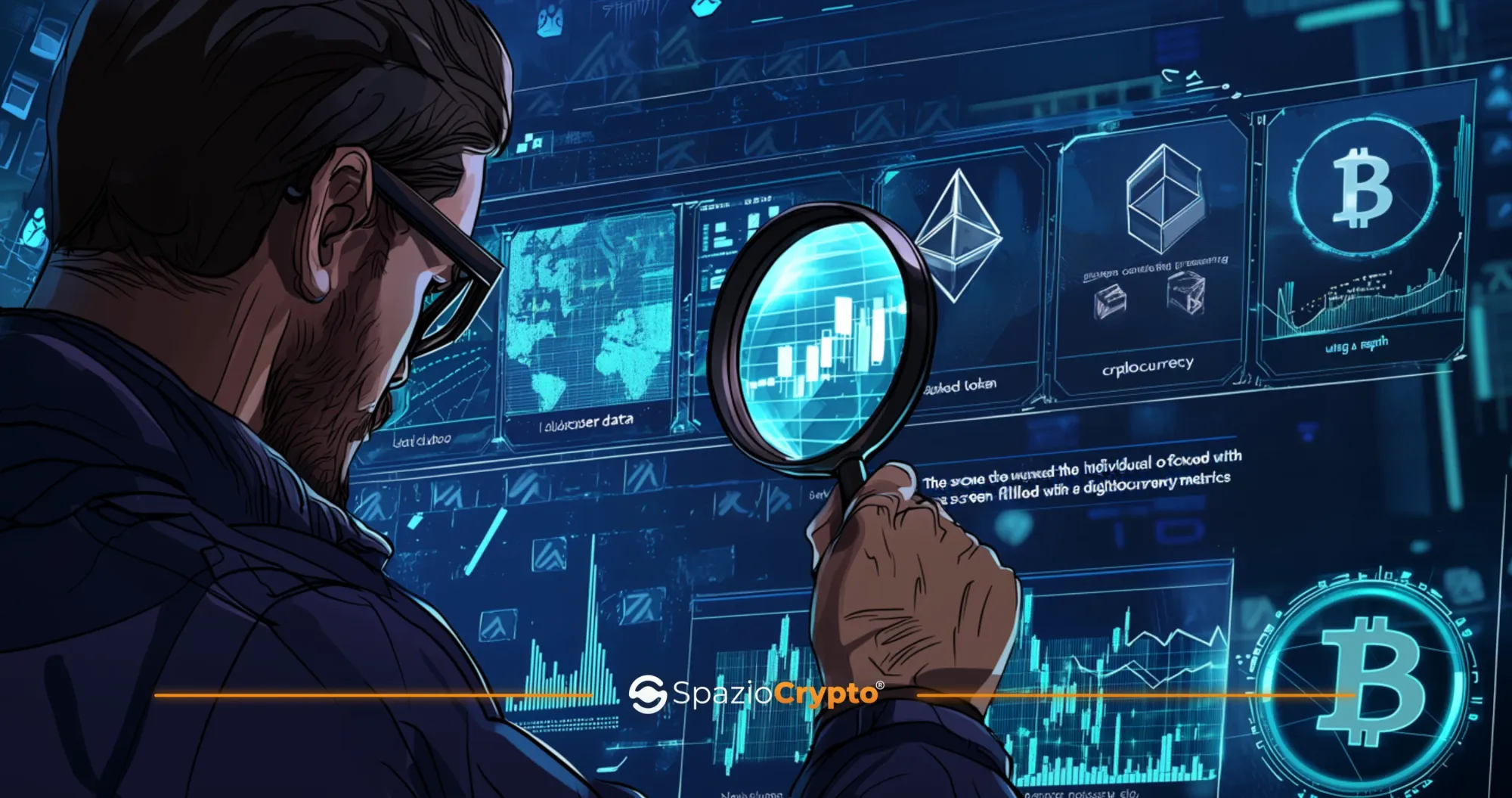DeFAI is the combination of decentralised finance (DeFi) and artificial intelligence (AI). The term 'DeFAI' was first coined by Italian Daniele Sesta in early 2023, when he started experimenting with the integration of AI agents into DeFi protocols.
Since 2025, the DeFAI market has shown a steady growth thanks to the active development of on-chain automation and the emergence of more and more AI-based applications. In the following, we will analyse the main features of this trend and its long-term implications for decentralised technologies.
What is DeFAI?
DeFAI combines DeFi and AI technologies to simplify the interaction with cryptocurrencies, making them more accessible for both experienced traders and developers, as well as beginners. The blockchain industry is still complex for the general public: cryptocurrency wallets need to be properly created and secured, fees, liquidity, trading strategies and other aspects of DeFi need to be understood.
DeFAI is designed to eliminate these obstacles by automating workflows as much as possible and offering users a simpler, more personalised interface for trading financial instruments on the blockchain.
Why is DeFAI gaining momentum?
Currently, the total capitalisation of the DeFAI sector is estimated at $2 billion, and analysts predict further growth. This sector is already being referred to as the next stage in the evolution of the cryptocurrency market.
Four Key Areas of DeFAI
The DeFAI ecosystem is still developing, but several promising areas are emerging:
- AIdriven apps → automating staking, trading and wallet management.
- Market analysis → using AI for more informed decisions.
- AI-abstraction → simplified interfaces for more intuitive interaction with DeFi.
- Infrastructure → development of protocols to integrate AI into DeFi systems.
The Fundamental Value of DeFAI
DeFAI redefines the value of DeFi by deeply integrating blockchain data with artificial intelligence algorithms. It offers several innovative features that improve decision-making and user experience:
- Improved decision-making → AI analyses transparent blockchain data and provides more accurate investment advice and market forecasts.
- Intelligent asset management → adaptive investment strategies based on network data and market dynamics.
- Real-time risk management → machine learning models predict market fluctuations and trigger stop-loss and automatic settlement mechanisms.
- Personalised user experience → AI analyses user behaviour and offers tailored recommendations for financial products.
- Transparency and verifiability → every AI decision is recorded on the blockchain, ensuring traceability and trust.
Problems DeFAI solves
For beginners
- Wallet creation and protection → many people don't know how to securely store private keys.
- Difficulties with fees and liquidity → gas fees, slippage, token types and other parameters vary between DeFi protocols.
- Complex transactions → bridging, staking, lending, trading: learning all these areas takes time and expertise.
For advanced users
- Analysis of large amounts of on-chain data → requires evaluation of historical transactions, metadata, cross-chain transactions and more.
- Transaction monitoring → to detect patterns or streams of suspicious transfers.
- Detection of DeFi opportunities → yield farming strategies, arbitrage, tokenomics analysis.
How Do DeFAI's AI Agents Work?
Cryptocurrency AI agents are at the heart of DeFAI and automate key operations in DeFi. Their operation process is divided into four steps:
- Data collection
- Analysis of tokenomics metrics (capitalisation, liquidity, trading volume).
- Monitoring social sentiment, news, regulations.
- Interpretation
- Identification of hidden patterns through machine learning algorithms.
- Recognition of technical patterns in price charts.
- Decision making
- Determination of the optimal time to enter/exit a trade.
- Distribution of liquidity across different pools.
- Continuous learning to optimise strategies.
- Execution
- Signing trades and interacting with smart contracts.
- Trading on DEX and managing positions in liquidity pools.
- Adaptation to real-time market conditions.
Will DeFAI lead to the mass adoption of Web3?
Many experts believe that DeFAI could accelerate the deployment of Web3 by simplifying the use of blockchain. However, the industry is still in its infancy and, with the increasing focus on AI, some projects may exploit the term 'artificial intelligence' for marketing purposes only, without offering real innovation.
For this reason, users and investors should carefully evaluate each platform, checking documentation, teams, tokenomics and roadmaps. If the promises seem too good to be true, they probably are.
Future Perspectives of DeFAI
Artificial intelligence in DeFi reduces technical barriers, improves market analysis and enables smarter trading. With the advancement of technologies such as LLM (Large Language Models), Reinforcement Learning and MPC wallets, AI will continue to improve the user experience and drive the evolution of smart finance.
Although DeFAI is still in its early stages, it has huge potential for growth. If the challenges of transparency, security and regulation are addressed, DeFAI could transform the traditional financial system, offering faster, more accurate and personalised financial services and improving the entire global financial ecosystem.
The DeFi industry has already established a mature market with lending, trading and asset management, with a Total Value Locked (TVL) of hundreds of billions of dollars. As an emerging sector, DeFAI is expected to grow from $1.5 billion to $10 billion by the end of 2025.
DeFAI is not just a technological addition to DeFi, but a profound transformation of financial infrastructure, data value and intelligent decision-making. In the future, intelligence, personalisation and decentralised autonomy will be the three main pillars of the industry, revolutionising cross-chain interactions, Web3 identification and regulatory compliance.








